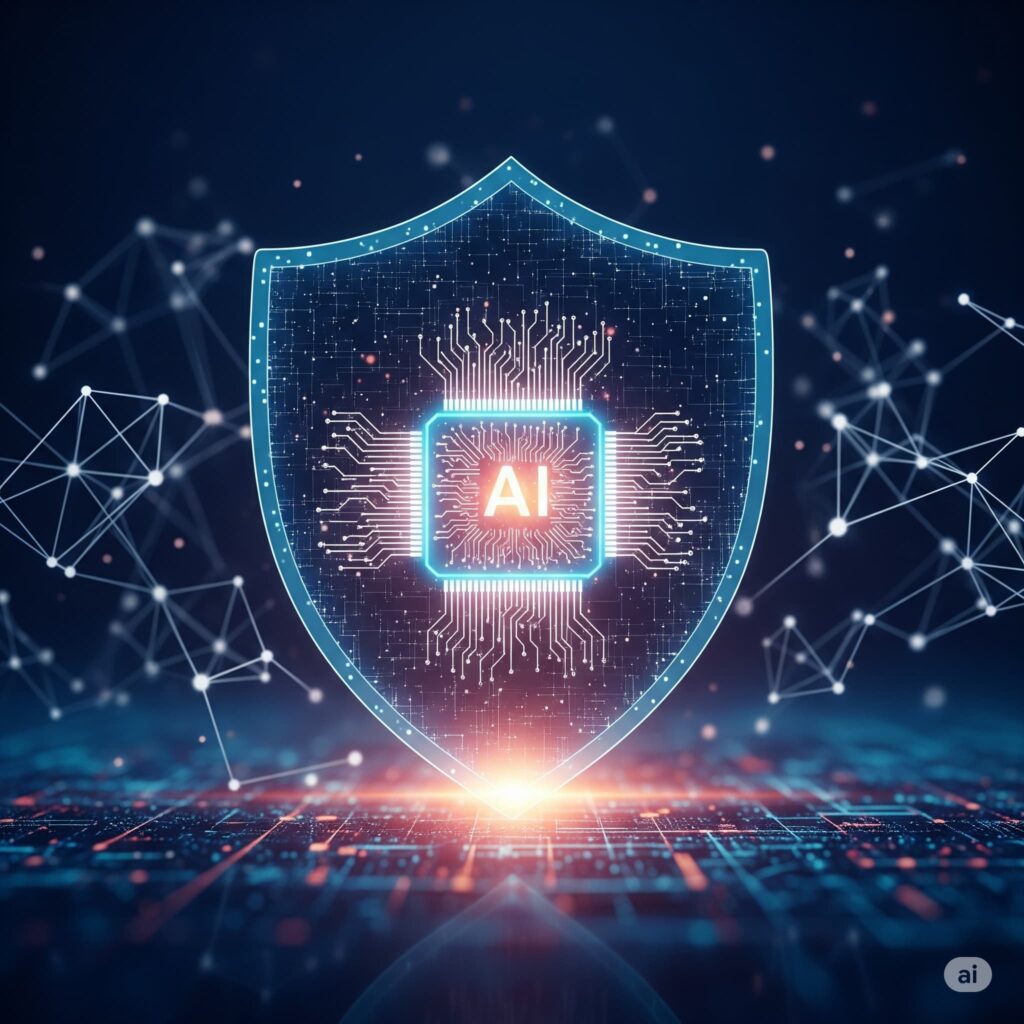
The digital world is a thrilling place, connecting us globally and offering unprecedented opportunities. But this interconnectedness also makes us vulnerable to cyberattacks. Fortunately, artificial intelligence (AI) is emerging as a powerful tool in the fight to keep us safe online. This post explores the crucial role AI plays in cybersecurity, explaining its benefits and limitations in simple terms.
AI: The New Guardian of Your Digital Life
Cybersecurity threats are constantly evolving, becoming more sophisticated and harder to detect. Traditional security methods often struggle to keep pace. This is where AI steps in, offering a proactive, adaptive defense system. AI excels at analyzing massive amounts of data far quicker than any human team ever could. This allows it to identify patterns and anomalies indicative of malicious activity, often before a human would even notice.
How AI Bolsters Cybersecurity Defenses
AI’s application in cybersecurity spans various areas:
- Threat detection and prevention: AI algorithms can analyze network traffic, user behavior, and system logs to identify suspicious activities in real-time. For example, AI can detect unusual login attempts from unfamiliar locations or identify malware based on its behavior.
- Vulnerability management: AI can automatically scan systems for vulnerabilities, prioritizing those that pose the greatest risk. This allows security teams to focus their efforts on the most critical issues.
- Incident response: When a security incident occurs, AI can help automate the response process, isolating affected systems and containing the damage. This can significantly reduce the impact of an attack.
- Phishing detection: AI is incredibly effective at detecting phishing emails and websites. By analyzing the email’s content, sender’s address, and links, AI can identify subtle clues that indicate malicious intent. Traditional methods often miss these nuances.
- Fraud detection: In the financial sector, AI is used to detect fraudulent transactions in real-time. By analyzing transaction patterns and user behavior, AI can identify anomalies that suggest fraudulent activity.
- Endpoint detection and response (EDR): AI-powered EDR solutions monitor endpoints (computers, laptops, mobile devices) for malicious activity, providing real-time alerts and automated responses.
Practical Examples of AI in Action
Imagine a bank using AI to monitor transactions. The AI system detects an unusually large withdrawal from a customer’s account in a foreign country. This triggers an alert, allowing the bank to immediately investigate and potentially prevent a significant financial loss.
Consider an email filtering system employing AI. The system flags an email with suspicious links and wording as potentially malicious, preventing the recipient from clicking on a link that could infect their computer with malware.
Another example is a company using AI to scan its network for vulnerabilities. The AI identifies a critical vulnerability in a web server, allowing the company to patch the vulnerability before hackers can exploit it.
The Limitations of AI in Cybersecurity
While AI is a powerful tool, it is not a silver bullet. It has limitations that must be considered:
- Data dependency: AI algorithms rely on large amounts of data to learn and improve. Without sufficient data, AI systems may not be effective.
- Adversarial attacks: Hackers are becoming increasingly sophisticated, developing techniques to evade AI-based security systems. These “adversarial attacks” aim to trick the AI into misclassifying malicious activity as benign.
- Explainability: Some AI algorithms are complex and difficult to understand, making it challenging to explain why they made a particular decision. This lack of transparency can make it difficult to troubleshoot issues or build trust in the system.
- Bias: Like any technology, AI can be biased. If the data used to train the AI system is biased, the system may make biased decisions. This can lead to unfair or inaccurate results.
The Human Element Remains Crucial
AI is a powerful tool, but it’s not a replacement for human expertise. Security professionals are still needed to oversee AI systems, interpret their findings, and make critical decisions. The combination of human intelligence and AI’s analytical power creates a stronger, more resilient defense.
The Future of AI in Cybersecurity
The future of AI in cybersecurity is bright. As AI technology continues to evolve, we can expect even more sophisticated and effective security solutions. This includes improved threat detection, faster incident response, and more proactive security measures. However, the ongoing development of countermeasures against these AI-powered security systems will be a continuous arms race.
AI is transforming the landscape of cybersecurity, providing a crucial layer of defense against the ever-evolving threat landscape. While it has limitations, its ability to process vast amounts of data and identify subtle patterns makes it an invaluable asset in the fight to protect our digital world. The future of online security hinges on the continued development and integration of AI, but always in partnership with the expertise of skilled human professionals.